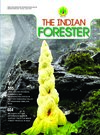Impact of variable Pruning Intensities in Dalbergia sissoo (Roxb.) and Agronomical management on wheat production in Agrisilviculture system
DOI:
https://doi.org/10.36808/if/2018/v144i7/130938Keywords:
Pruning Intensities, Biomass, Agronomical Manage.Abstract
The experiment was carried out at dusty acre farm, Department of Forestry, college of Agriculture, J. N. K. V. V. Jabalpur during the year 2014- 2015. In agrisilviculture system, canopy management like pruning is an essential silvicultural management practice for reducing both above and below ground competition with associated crop. The experiment consists of four pruning intensities viz: no pruning, 25% pruning, 50% pruning and 75% pruning and one open condition (no tree crop only) in main plot and three levels of fertilizer doses and seed rate viz; T1 recommended dose of fertilizer and seed rate, T2-T1 + 25% more nitrogen then recommended dose of fertilizer and T3-T1 + 25 % more seed rate than recommended dose of 3 1 seed rate in sub plot replication in 5 times. 75% pruning recorded significantly higher yield attributing characters as compared no pruning. Open condition recorded higher grain yield (27.3 q ha-1), straw yield (41.8 q ha-1) and harvest index (39.5%) as compared to different pruning treatment' 75% pruning gave higher grain yield (24.4 q ha-1), straw yield (40.6 q ha-1) and harvest index (37.5%) as compared to other pruning treatment. No pruning recorded significantly lowest grain yield, straw yield and harvest index. At age of 16 years, Dalbergia Sissoo in 25% pruning gave higher tree height (11.92 m), dbh (22.71cm), cylindrical volume (217.27 m3 ha-1), and stand biomass (167301 kgha-1). In managed agroforestry system wheat + D. Sissoo in 25% pruning gave significantly highest monetary return (` 79421 ha-1) as compared to no pruning (` 67506 ha-1), crop alone (`39714 ha-1) and tree alone (` 40243 ha-1). In agronomical management practices 25% more nitrogen then recommended dose recorded significantly higher monetary return (` 69616 ha-1) than recommended dose of fertilizer and seed rate (`59544 ha-1).References
Ali A., Khalifa A., Elkhoby W. and Okasha E.M. (2014). Effect of sowing dates and seed rates on some wheat cultivars. African J. Agri. Research, 9(2): 196-201.
Bandara G.D., Whitehead D., Mead D.J. and Moot D.J. (1999). Effects of pruning and understorey vegetation on crown development, biomass increment and aboveground carbon partitioning in Pinus radiata D. Don trees growing at dry land agroforestry site. Forest Ecology and Management, 124: 241-254
Chauhan S.K., Brar M.S. and Sharma R. (2012). Performance of poplar (Populous deltoids bartr.) and its effect on wheat yield under agroforestry system in irrigated agro-ecosystem, India. Caspian J. Env. Sci., 10(1): 53-60
Dar S.A. (2007). Biomass, carbon and nitrogen dynamics as affected by different pruning regimes in Albizia procera based agrisilviculture system. Ph.D. Thesis (Agroforestry). Institute of Agriculture Science, Bundelkhand University, Jhansi. India.
Khaliq A. (2008). Comparative study of different densities of popular in wheat based Agroforestry system in central Punjab. Indian Jounral of Environmental Science, 12:234-240.
Nayak H., Koshta L.D. and Upadhyaya S.D. (2011). Differential response of pruning intensities on Dalbergia sissoo Roxb. Based agrisilviculture system. Indian Forest Congress 22-25 Nov.2011, 66 pp.
Nayak Hiranmaye.( 2011). Effect of different pruning intensities on growth and yield of paddy varieties under dalbergia sissoo based Agrisilviculture system. M.Sc. Thesis. College of agriculture JNKVV. Jabalpur. 46-48 pp.
Pinkard E.A., Battagalia M., Beadle C.L. and Sands P.J. (1999). Modeling the effect of physiological responses to green pruning on net biomass production of Eucalyptus nitens. Tree Physiology, 19: 1-12
Downloads
Downloads
Published
How to Cite
Issue
Section
License
Unless otherwise stated, copyright or similar rights in all materials presented on the site, including graphical images, are owned by Indian Forester.





